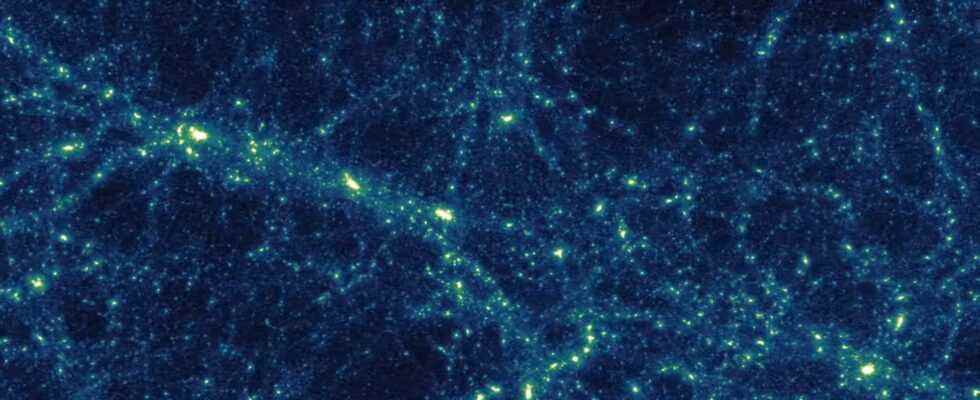It is the very first simulation that traces the life cycle of a galactic protocluster, the ancestors of current galaxies located 11 billion light-years from us.
How to study the very first galaxies of the Universe and their evolution? Observation, first. Thanks to the time it takes for light to travel, by looking at the distant Universe, we go back in time. It is possible to combine models, produced from these data. But computer simulations also play a decisive role. Works published on June 2, 2022, in Nature Astronomyare from the very first simulation recreating not only galactic protoclusters, but also their entire life cycle.
We speak of “protoclusters” because they are the ancestors of clusters (clusters) of galaxies (proto means earlier). To understand how our current galaxies exist, it is necessary to trace their complete evolution. “ We wanted to try to develop a complete simulation of the real distant universe to see how the structures started and how they ended “says the lead author, Metin Ata, in a commentary on the study.
These galaxies are 11 billion light years away
Developing this type of simulation is, according to the authors, quite close to building a “ time machine » : and for good reason, the simulated galactic cluster is distant from us by 11 billion light-years. A simulation, however, is not a photograph of reality. But Metin Ata gives an illustration: “ It’s like finding an old black and white photo of your grandfather, and creating a video of his life from there. »
To generate a computer simulation of this type, we start by storing all the data — figures, coordinates, images — available at the starting point, in the past of the cosmos. Then, from there, the algorithmic extrapolation can take place. In this case, to use the image of Metin Ata, the simulation starts with a simple image of an ancestor of the current galaxy clusters, then it produces its evolution up to the current galaxies.
When the simulation starts, the modeling corresponds to 20% of the current age of the Universe. When the simulation ends, it is at 100%, which makes it possible to anticipate what this region of the cosmos may look like at the moment despite the 11 billion light years that separate us.
The simulation takes into consideration the entire environment of the simulated cluster, which represents a cosmic ecosystem of immense magnitude, and which also guarantees good fidelity of the result. A very powerful way to test our cosmological model of the Universe and what we know about the formation of galaxies.
To see in detail what the simulation looks like, a video has been published:
